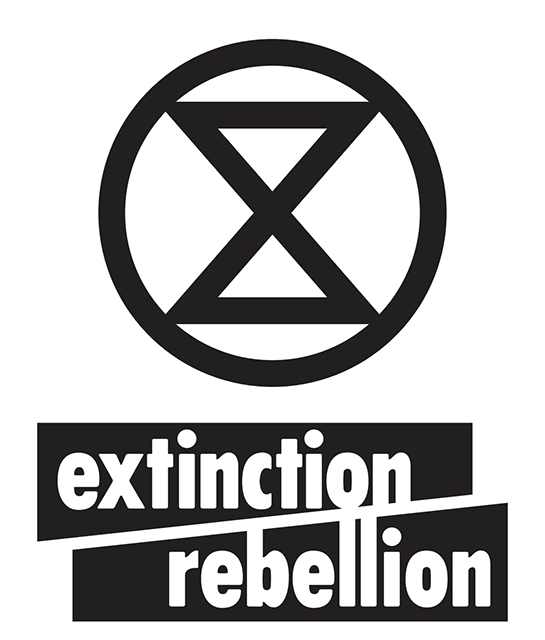#CoveringClimateNow and social movements, #FridaysForFuture and #ExtinctionRebellion
“Nature, you cannot play tricks with nature. Nature strikes back and we are seeing nature striking back and this is a very serious problem,” said United Nations Secretary-General Antonio Guterres in an interview with CBS News. Three years has passed since the adoption of the Paris Climate Accord. But what has been happening? The world is still getting hotter and planet-warming greenhouse gas emissions are still rising. This is the reason Guterres called a special climate summit to seek ways to reboot the plan.
There is hope. A new beginning is taking place for climate reporting. Covering Climate Now, a joint initiative of The Nation and Columbia Journalism Review (CJR), is the biggest effort ever undertaken to organize the world’s press around a single topic. A focused climate coverage started on September 15 and would go on through until Monday, September 23, the day of the United Nations Climate Action Summit in New York. The response has been amazing. Over 250 news outlets across the US and around the world including print, digital, TV and radio with a combined audience of over 1 billion people embraced this initiative. Philippine media are not in the list of partners (https://www.coveringclimatenow.org/partners) but they could publish syndicated content from the Agence France-Presse (AFP). Even after the week is over, the climate story is not going away.
Misconceptions and roadblocks continue to stand out in the climate coverage. One is “readers would find this depressing and tune out.” This turned out to be inaccurate. According to CJR, news organizations with climate coverage discovered younger viewers, listeners, and readers are engaged in the coverage. The youth may get angry or energized or organized by climate stories, but they don’t tune them out. Even before the initiative of #CoveringClimateNow, two movements that involve the youth are getting mileage: Fridays For Future and Extinction Rebellion. My daughter introduced me to these two movements when we covered pro-democracy activist Joshua Wong and the Hong Kong protest movement in Berlin. The youth is very much involved and media focused on climate coverage must take time to amplify their demands. Together with media coverage, the social movements could make a difference.
#FridaysForFuture (FFF) is a movement that began in August 2018, after 15-year-old Greta Thunberg sat in front of the Swedish parliament every school day for three weeks, to protest against the lack of action on the climate crisis. Thunberg posted what she was doing on Instagram and Twitter, and this went viral. FFF is better known as an international movement of school students who take time off from class to take part in demonstrations to demand action to prevent further global warming and climate change. Students and adults use the hashtags #FridaysForFuture and #Climatestrikez to protest outside of their parliaments and local city halls all over the world. The total number of climate strikers reached 3.6 million people across 169 countries as of August 2019.
Young people from around the world are leading a massive coordinated strike on September 20 to 27, to protest government and business inaction on climate change. The global climate strikes cover 4638 events in 139 countries on all continents and still counting. In the Philippines, Zero Waste Youth Pilipinas. (https://www.facebook.com/ZeroWasteYouthPilipinas/) is the FFF counterpart. Filipino youths are leading the call for urgent and ambitious actions by organizing #ClimateStrikes happening around the country. If you are interested, check out the list of the nearest registered strike ( https://world.350.org/philippines/climatestrike2019/).
Along with Fridays for Future, Extinction Rebellion (XR) is building itself as the second arm of a new global climate protection movement. XR is a sociopolitical movement which aims to use civil disobedience and nonviolent resistance to compel government action on climate breakdown, biodiversity loss, and the risk of social and ecological collapse. The movement was co-founded by Roger Hallam and Dr. Gail Bradbrook in October 2018 in a small English town and began its first phase of international rebellion in 2019. The United Kingdom became the first country to declare a state of climate and ecological emergency. In the Extinction Rebellion handbook given to me by my daughter, XR acknowledges that the Extinction Rebellion is just one articulation of a feeling that is being felt across the world. They see themselves as one branch of a much wider, stronger and wiser movement.
Breaking down the old ways of thinking and moving beyond our current conception of what is and what is not possible, is a challenge. The truth about climate change must be based on facts and backed by evidence-based solutions from scientists. The #CoveringClimateNow media partners play a role in explaining complex scientific concepts in a language that most people understand.
Media must not be a vehicle to spread disinformation and delay action on climate change. Citizens could take part in environmental movements and commit to a zero waste lifestyle. Zero Waste is one of the most cost-effective short-term climate solutions. You could help fight misinformation by communicating the facts about climate science, to your friends, your community, the media, or policy makers.
Join the Fridays for Future (https://www.fridaysforfuture.org/) or Extinction Rebellion (https://xrebellion.org/) to learn more about taking care of our future. Use their hashtags in social media to create meaningful discussions about our love for humanity and love for Mother Earth.
First published at Sunday Business and IT September 22, 2019






